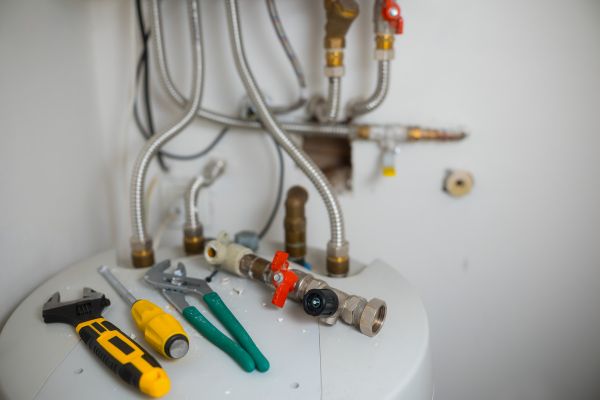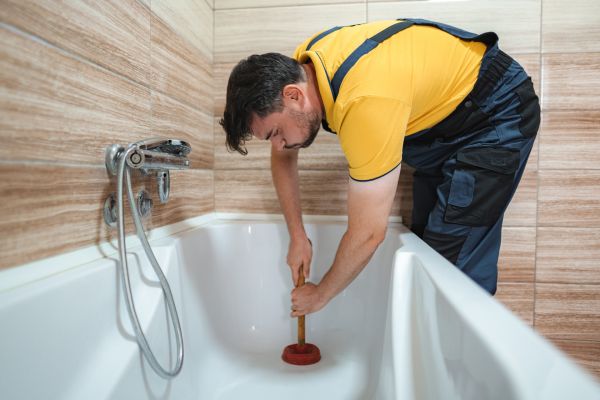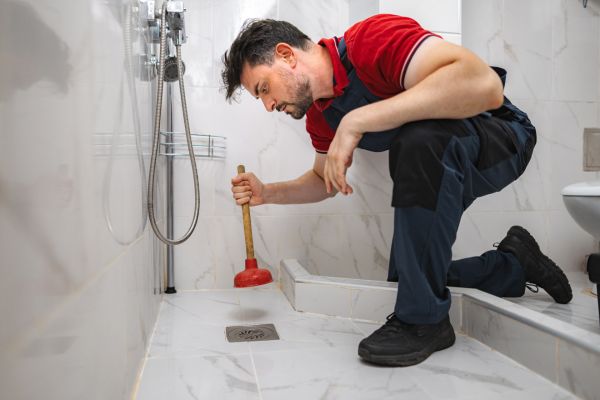If you’ve ever stepped into your tub expecting a relaxing soak and instead found yourself ankle-deep in murky water, you know the frustration is real. Bathtub plumbing problems can turn a peaceful bath into a full-blown headache. But here’s the good news — most issues can be fixed without calling in a professional every time. In this guide, we’ll dive deep into bathtub plumbing problems solutions, covering everything from clogged drains to mysterious leaks, and how you can handle them like a pro.
Understanding Common Bathtub Plumbing Problems
Before we talk solutions, let’s be real — knowing what’s going wrong is half the battle. Bathtubs are connected to multiple plumbing components, so even a small hiccup can lead to bigger issues if ignored. The most common bathtub plumbing problems include:
- Slow or clogged drains
- Leaky faucets
- Low water pressure
- Faulty diverter valves (for shower-tub combos)
- Water leaking beneath the tub
Each of these can sneak up on you, and before you know it, your bathroom floor turns into a mini swimming pool. But don’t worry — there are practical bathtub plumbing problems solutions for each.
Clogged Drains: The Silent Offender
Clogged drains are probably the number one culprit. Hair, soap scum, and dirt slowly build up over time, creating a nasty blockage. You might notice water draining slowly, or worse — not draining at all.
The thing is, you don’t always need to reach for harsh chemicals. Start with a natural fix. Pour a mixture of baking soda and vinegar down the drain, followed by hot water after 15 minutes. This helps break down grime and loosen buildup. If that doesn’t work, a drain snake or plunger usually does the trick.
If you’re dealing with recurring clogs, it might be time to remove the drain cover and give it a deeper clean. And yes, that means facing the hair monster beneath — but trust me, it’s worth it.
Leaky Faucets: The Constant Drip-Drip Problem
That annoying drip sound at 2 a.m.? Yeah, it’s more than just irritating — it’s money literally going down the drain. Leaky faucets often happen due to worn-out washers, seals, or O-rings inside the tap assembly.
The good news is that fixing this is part of the simplest bathtub plumbing problems solutions you can try. Turn off the water supply, dismantle the faucet handle, and inspect the rubber washers. If they’re worn or cracked, replace them. Reassemble everything, and boom — silence.
And if you’ve got an older tub fixture, consider upgrading to a modern, water-efficient model. Not only does it look great, but it saves water and reduces future leaks.
Low Water Pressure: The Trickle Trouble
Few things are more disappointing than turning on your bathtub tap and getting a weak trickle instead of a steady flow. Low water pressure can be caused by mineral buildup in the aerator, a partially closed valve, or even sediment in the pipes.
Start simple. Remove the faucet spout or aerator and clean it with vinegar to dissolve limescale. If pressure doesn’t improve, check the main shutoff valve — sometimes it’s not fully open. Still no luck? It might be time to flush your plumbing lines or call a plumber for inspection. But nine times out of ten, cleaning the aerator does the job.
Faulty Diverter Valves: When Your Shower Acts Up
If you’ve got a bathtub-shower combo and the shower doesn’t switch properly, the diverter valve might be to blame. This valve controls whether water flows to the tub spout or the showerhead. When it’s stuck, damaged, or clogged with sediment, it won’t redirect water properly.
Here’s one of the most practical bathtub plumbing problems solutions for this issue: unscrew the spout or valve handle, clean out debris, and soak removable parts in vinegar. If it’s too corroded or cracked, replacement is often easier than repair. Luckily, new diverter valves aren’t expensive and are easy to install.
Water Leaks Beneath the Tub: The Hidden Nightmare
Leaks beneath the bathtub are trickier — and sometimes go unnoticed until water damage shows up on the ceiling below or along the floor edges. Common causes include loose drain fittings, cracked pipes, or deteriorated seals.
To check for this, fill the tub and watch closely around the drain and edges. If you spot water pooling underneath, tighten the drain assembly using plumber’s putty. For older tubs, resealing the edges with silicone caulk might solve the issue. But if the leak continues, it’s best to get a plumber involved. Hidden leaks can cause mold and serious water damage over time.
Unpleasant Odors from the Drain
If your bathroom smells funky even after a deep clean, your tub drain could be the source. The P-trap (the curved pipe under the drain) holds water to block sewer gases. When it dries out or clogs with grime, odors can escape.
The fix is usually simple: run water through the drain regularly to refill the trap. If that doesn’t solve it, clean the drain with a baking soda-vinegar mixture, followed by boiling water. You can also pour a little mineral oil down the drain to slow evaporation — a plumber’s little secret.
Preventing Future Bathtub Plumbing Problems
Let’s be honest — prevention beats repair any day. A few small habits can save you a ton of hassle later. Use a drain cover to catch hair, avoid dumping greasy or thick substances down the drain, and once a month, flush the system with hot water and vinegar. It keeps your pipes clear and odor-free.
Also, inspect your faucets and seals every few months. Small cracks or leaks can be fixed quickly before they turn into bigger issues. Think of it like routine maintenance for your car — a little care goes a long way.
When to Call a Professional Plumber
Some bathtub plumbing problems solutions are easy enough for a DIY fix, but if you notice persistent low water pressure, major leaks, or strange noises from your pipes, it’s best not to gamble. Professional plumbers have the tools to detect hidden leaks, replace worn-out pipes, and ensure your plumbing system stays in top shape.
Sure, calling a plumber might cost a bit, but it’s cheaper than repairing water-damaged walls or floors later on.
Final Thoughts
Bathtub plumbing problems don’t have to ruin your relaxation time. With the right approach — and a little know-how — most issues are totally manageable. Whether it’s unclogging a stubborn drain, fixing a dripping faucet, or dealing with low water pressure, there’s almost always a simple solution before you need to call for backup.
So next time your bathtub acts up, don’t panic. Take a breath, grab your tools, and try these bathtub plumbing problems solutions first. Because let’s be real — nothing beats soaking in a tub that drains perfectly, runs quietly, and just works.


